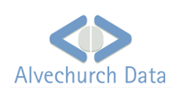Access Switchboard Forms
Many people overlook the switchboard feature of Microsoft Access but it
does provide a very quick and easy front-end for a simple database system.
A switchboard is a form which acts as a menu to the rest of your database.
It has a number of buttons, each of which leads to another form, another
switchboard or to a simple command like running a report. The Access
Switchboard Manager is a wizard which lets you build a simple hierarchy
allowing the user to navigate between the main areas of the application.
The example illustrated here is the front-end to our enquiry-tracking
database. This application records enquiries from clients and the names of
the people who made these enquiries. The main switchboard lets the user go
to the Client, Enquiry or People switchboards and work with those areas
of the database or to go to the Reports switchboard and run various
reports. The database application is much larger than this and the main
body is full of VBA code providing links between forms, automating common
tasks and validating data entry but the entry point to the whole system
was built as a simple set of switchboards with the wizard.
Creating a switchboard
Use the Switchboard Manager to create and modify switchboards. This is
in different places in different versions of Access. In Access 97 it is
under
on the
menu, in Access XP it is under
on the
menu.
A rather worrying dialog appears the first time that you open the
Switchboard Manager:
![Access warning that the wizard cannot find a switchboard [The Switchboard Manager was unable to find a valid switchboard.]](../media/images/switchwarning.gif)
Pay no attention to the warning icon and just click
.
The Switchboard Manager will appear with a single default entry named
"Main Switchboard. Click the
button and change the
to something more suitable to your own application. The word "(Default)"
always appears in the manager window to show you which switchboard will
appear first. It doesn't appear on screen in your application.
![The Access Switchboard Manager as it first appears [The Switchboard Manager as it first appears.]](../media/images/switchmanager1.gif)
This switchboard only has the one entry so that has to be the default. You
can use the
button later if you want to make another switchboard the default.
Other pages in this series
Part 1
Getting started
Part 2
Building the structure
Part 3
Improving the appearance
Part 4
Behind the scenes
|

